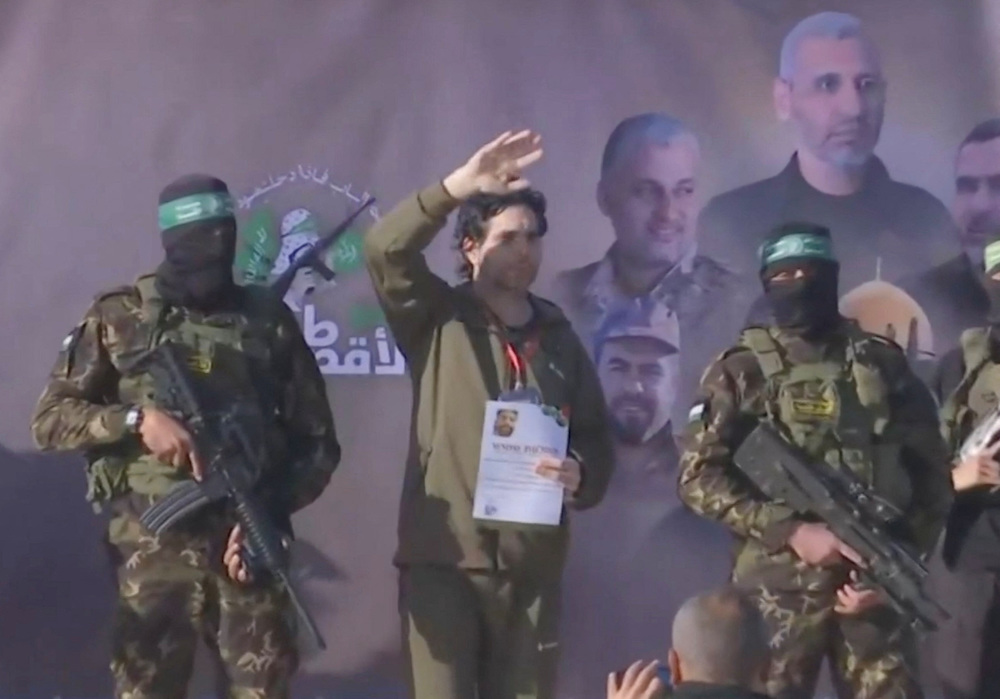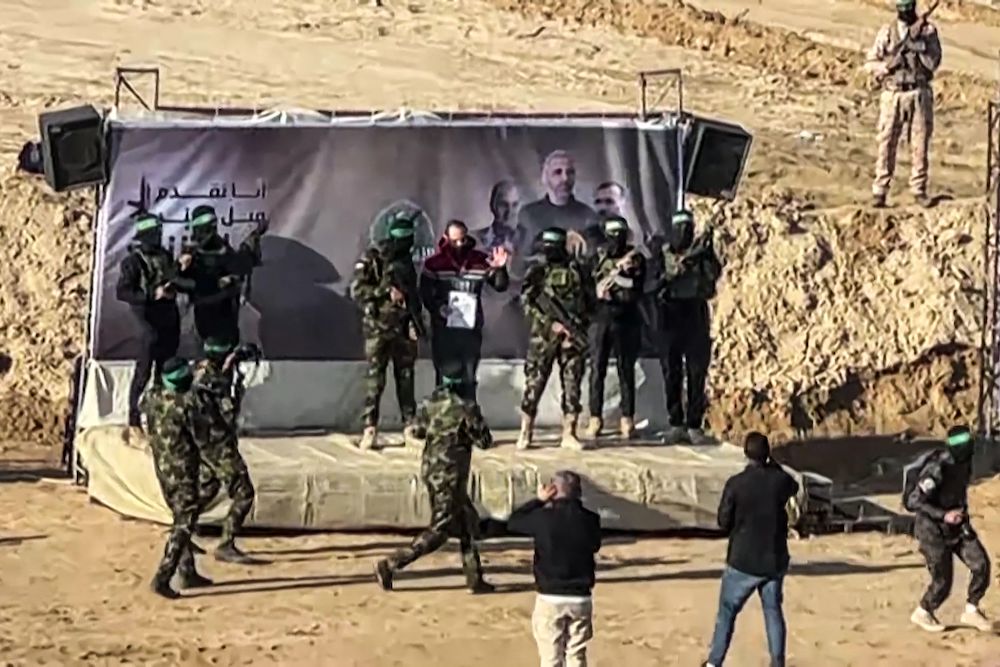DOHA: Key mediator Qatar said on Wednesday that 33 hostages held by Hamas in Gaza would be released in the first stage of a ceasefire deal aimed at ending the war in the Palestinian territory.
Two sources close to Hamas earlier told AFP that Israel would release about 1,000 Palestinian prisoners, while an Israeli government spokesman said hundreds would be released.
Below are the key details of the expected initial phase of the deal according to Qatari, US, Israeli and Palestinian officials and media reports:
Qatar said Wednesday that Israel and Hamas had agreed to a ceasefire in Gaza starting on Sunday and a hostage and prisoner exchange after 15 months of war.
Thirty-three Israeli hostages will be released in the first, 42-day phase of the agreement that could become a “permanent ceasefire,” said Qatar’s Prime Minister Sheikh Mohammed bin Abdulrahman bin Jassim Al-Thani.
Those first released would be “civilian women and female recruits, as well as children, elderly people... civilian ill people and wounded,” he said.
Israeli government spokesman David Mencer said on Tuesday Israel was “prepared to pay a heavy price — in the hundreds” in exchange for the 33 hostages.
An anonymous Israeli official said “several hundred terrorists” would be freed in exchange for the hostages, with the final number depending on how many of the 33 hostages are alive.
Two sources close to Hamas told AFP that Israel would release about 1,000 Palestinian prisoners, including those with “lengthy sentences.”
Sheikh Mohammed said the number of Palestinian prisoners to be released in exchange for the Israeli hostages in the second and third phases would be “finalized” during the initial 42 days.
The 33 are among the 94 hostages held in Gaza since Hamas’s October 7, 2023 attack on Israel, which triggered the ongoing war. The total includes 34 captives the Israeli military has declared dead.
According to the Times of Israel, Israeli officials believe the 33 hostages are alive, though confirmation from Hamas is pending.
Gaza humanitarian situation, by the numbers
- At least 1.9 million people are displaced
- 92 percent of housing units are destroyed
- 68 percent of the road network is destroyed or damaged
- There are “zero” fuel reserves to operate generators at hospitals
- 88 percent of school buildings need rebuilding or major repairs
- Food aid amounting to three months’ of rations for Gaza’s population are waiting to enter
During the initial, 42-day ceasefire Israeli forces will withdraw from Gaza’s densely populated areas to “allow for the swap of prisoners, as well as the swap of remains and the return of the displaced people,” Qatar’s prime minister said.
Negotiations for a second phase would commence on the “16th day” after the first phase’s implementation, an Israeli official said.
This phase would cover the release of the remaining captives, including “male soldiers, men of military age, and the bodies of slain hostages,” the Times of Israel reported.
Israeli media reported that under the proposed deal, Israel would maintain a buffer zone within Gaza during the first phase.
Israeli forces were expected to remain up to “800 meters inside Gaza stretching from Rafah in the south to Beit Hanun in the north,” according to a source close to Hamas.
Israeli forces would not fully withdraw from Gaza until “all hostages are returned,” the Israeli official said.
Haaretz newspaper reported that Israel would allow the movement of residents from southern Gaza to the north.
The source close to Hamas said Israeli forces would withdraw from the Netzarim corridor westward toward Salaheddin Road to the east, enabling displaced people to return through an electronic checkpoint equipped with cameras.
“No Israeli forces will be present, and Palestinian militants will be barred from passing through the checkpoint during the return of displaced persons,” he said.
Joint mediators Qatar, the United States and Egypt will monitor the ceasefire deal through a body based in Cairo, Sheikh Mohammed said, urging “calm” in Gaza before the agreement comes into force.
There was “a clear mechanism to negotiate phase two and three,” Sheikh Mohammed added.
“We hope that this will be the last page of the war, and we hope that all parties will commit to implementing all the terms of this agreement,” Qatar’s prime minister said as he unveiled the deal.
Under the arrangements outlined by Qatar, the details of phases two and three will be “finalized” during the implementation of phase one.
US President Joe Biden said the as-yet unfinalized second phase would bring a “permanent end to the war.”
Biden said phase two would comprise an exchange for the release of remaining hostages who are still alive, including the male soldiers. Then all remaining Israeli forces would withdraw from Gaza, the US president said.





























